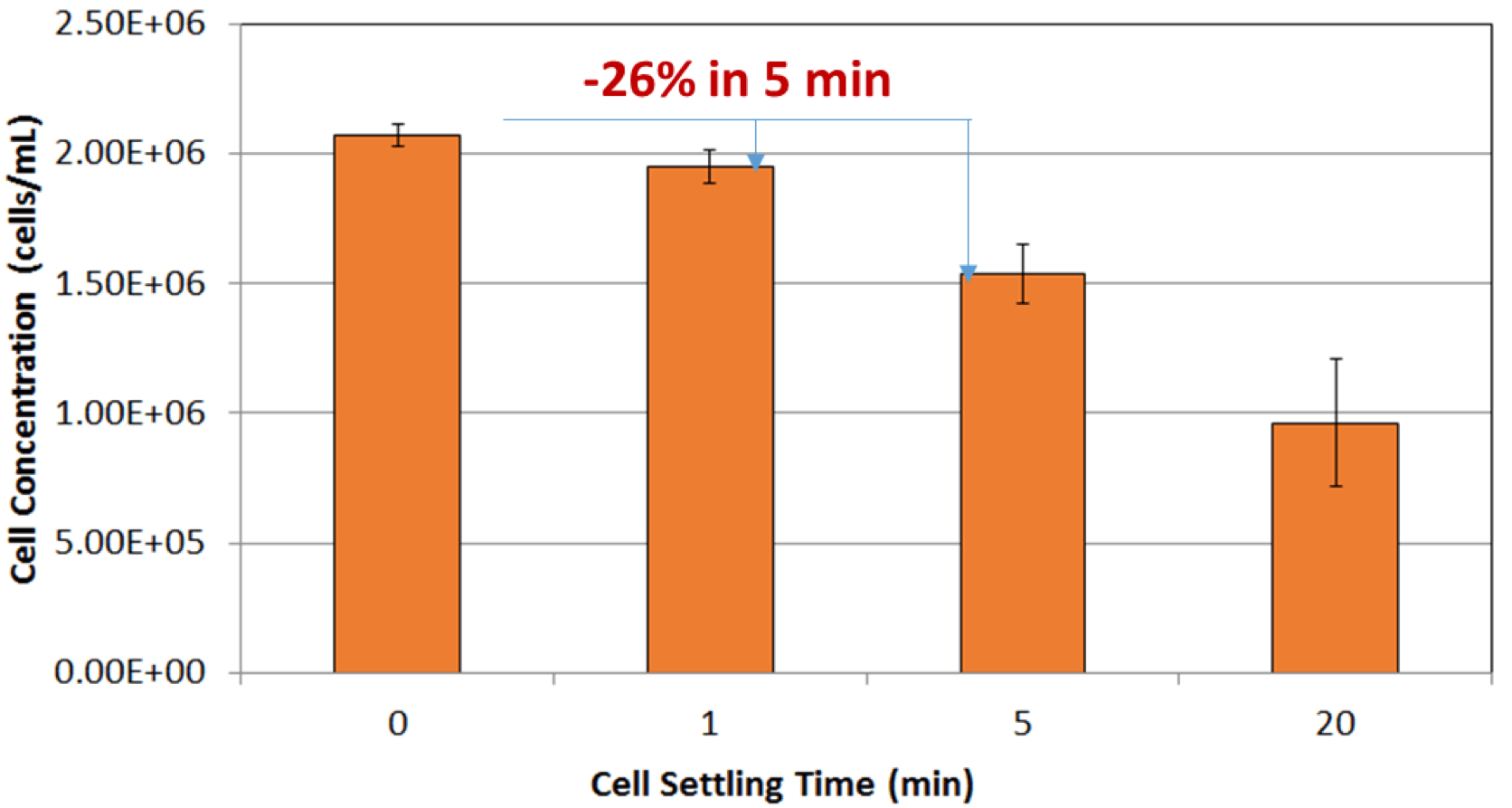Operation Assurance
There are important considerations for improving the cell counting process and proper operator training to ensure high quality and robust cell counting results. Specifically, cell counting is a process, thus the process for the cell counting assays, systems, as well as the operations can strongly dictate the quality of the results. In addition, cell counting operators should be provided training from either the vendor or technical lead in the lab and receive a training certificate, as well as periodic retraining.
Operation Assurance
Cell Counting Process
Cell counting success is highly influenced by cell sample preparation, which needs to be performed consistently and carefully in order to ensure cell counting measurements are of the highest quality. The procedures for preparing the cell sample for cell counting are critical, as improper cell sample handling can increase counting error and standard deviation, especially between operators, which has been published previously. Numerous bioprocessing steps are required when processing from primary patient cell samples to final cell and gene therapy products, where the sampling and dilution steps are critical when preparing cell samples for cell counting.
Important general considerations for sample processing include how the sampling and diluting occurs, which sample treatments are performed, and what staining procedures are implemented for the assay probes. These considerations can be further detailed when designing cell counting protocols, to ensure that all operators are performing the assay consistently. Cell sampling factors include sample size, frequency, and sample mixing, as well as calibration and correct use of sampling tools such as pipettes.
One major example demonstrating the importance of cell counting process is sample mixing and waiting time, which can cause cell settling thus affecting the cell counting results. To measure the effect of cell settling time on cell counting measurements, a 2 mL sample of Jurkat cells was aliquoted into a 15 mL tube. After uniform mixing by inverting the tube 10X and pipetting up and down 10X, approximately 200 µL of cells were removed from the middle of the suspension at 0, 1, 5, and 20 mins and analyzed. The results demonstrate that only 5 min of settling time can cause a 26% reduction in cell concentration. (Figure 1). This serves to emphasize how even slight variability in sample processing can have significant effects on cell counting accuracy.

Figure 1. Effect of cell settling time on measured cell concentrations
Protocols that include dilution should consider dilution buffer type (i.e. pH, temperature, etc.), as well as rounds of dilution. Previous publications have found that higher dilution factors generated lower CV; however, too many dilution steps can also increase CV. Sample treatments may include lysing, de-clumping, and any form of purification.
Finally, when assessing staining procedures, careful attention should be paid to the amount of stain, as well as the staining conditions such as temperature, light exposure, and time. As previously mentioned, many probes are sensitive to time, especially when staining dead cells, therefore, researchers must carefully consider their probes and signals through the context of operator processing. All of these steps for sample collection and processing must be performed consistently between all operators, as even minor variations can negatively affect cell counting accuracy and data.
Routine Operator Training
Cell counting operators should be fully trained on sample preparation and the selected cell counting systems to ensure consistent and precise cell counting results. Furthermore, periodic retraining from the manufacturer or lead user in the laboratory is recommended.
Cell Counting Process
- The operators should be trained on consistent sampling of cells, such as pipetting, sampling volume, location to sample, mixing prior to sampling
- The operators should be trained on the protocols to dilute the cell sample, such as volume to dilute, how many times to dilute
- The operators should be trained on sample preparation, such as lysing, declumping, and purification
- The operators should be trained on how to properly stain the cell sample, such as nuclear, metabolic, or colorimetric staining
Cell Counting System
- The operators or manufacturers should perform the Installation Qualification (IQ) and Operation Qualification (OQ) on the instrument, and provide completion documentation
- IQ – To verify the installation of the hardware and software in the selected environment and its documentation
- OQ – To verify that hardware and software will function according to its operational specifications in the selection environment
- The operator should be trained on using the cell counting system specifically on their intended use, meaning training on the operation of the cell counting instrument
- Physical usage of the cell counting instrument
- Physical usage of the consumable and reagent
- Operation of the cell counting instrument such as software control and analysis
